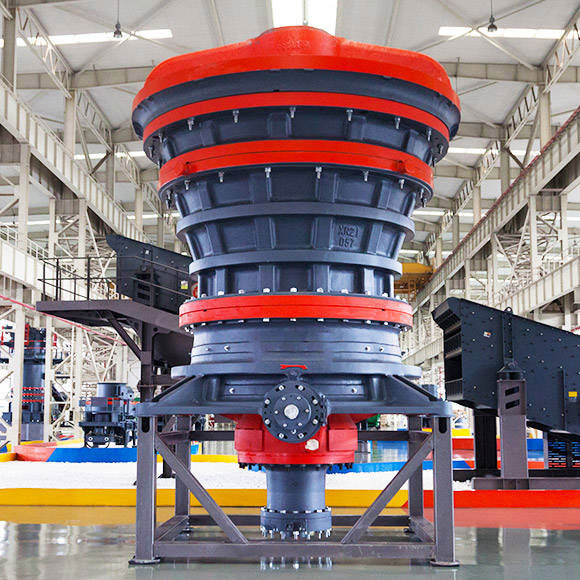Gyratory and cone crushers are commonly used in the mining and aggregate industries. Both of them have similarities in their crushing action, but they also have some important differences. In this answer, we’ll explore the differences between gyratory and cone crushers, how they work, and their applications.
What is a gyratory crusher?
A gyratory crusher is a primary crusher that uses a mantle to crush rocks. It works by rotating the mantle eccentrically within a concave, which is fixed to the frame of the crusher. As the mantle rotates, it moves closer or further away from the concave, which causes the rocks to be crushed between the mantle and the concave.
Gyratory crushers have a high capacity and can handle very hard, abrasive rocks. They are commonly used in large-scale mining and quarrying operations where they can process thousands of tons of material per hour. Gyratory crushers are also used in the aggregate industry for primary crushing of rocks.

What is a cone crusher?
A cone crusher is a secondary crusher that uses a mantle and concave to crush rocks. It works by squeezing the material between a mantle and a concave. The mantle is mounted on an eccentrically rotating shaft and the concave is fixed to a stationary frame. As the mantle rotates, it moves closer or further away from the concave, which causes the rocks to be crushed between the two.
Cone crushers are commonly used in the mining and aggregate industries for secondary crushing of rocks. They are also used in the construction industry for the production of concrete and asphalt.
The differences between gyratory and cone crushers
- Crushing process: The crushing process of a gyratory crusher is similar to a jaw crusher. The rocks are crushed between a stationary surface (the concave) and a moving surface (the mantle). In a cone crusher, the rocks are crushed between a stationary surface (the concave) and a movable surface (the mantle).
- Capacity: Gyratory crushers are capable of handling higher capacities than cone crushers. This is because of the larger diameter of the mantle and the shorter concave in a gyratory crusher, which allows for a larger feed opening and a greater throughput.
- Size reduction ratio: Gyratory crushers have a higher size reduction ratio compared to cone crushers. This means that gyratory crushers can reduce the size of rocks more effectively than cone crushers.
- Shape of the material: The shape of the crushed material produced by a gyratory crusher is more uniform compared to a cone crusher. This is because the gyratory crusher produces a more cubical product due to the larger head diameter.
- Maintenance: Gyratory crushers are more maintenance-intensive compared to cone crushers. This is because the parts of a gyratory crusher are more complex, with more moving parts and a higher chance of wear and tear. Cone crushers have fewer moving parts and are easier to maintain.
Applications of gyratory and cone crushers
Gyratory and cone crushers are both used in the mining and aggregate industries, but they have different applications. Gyratory crushers are typically used for primary crushing in large-scale mining and quarrying operations, while cone crushers are typically used for secondary and tertiary crushing in smaller-scale mining and construction operations.
In conclusion, gyratory and cone crushers are both important machines for the mining and aggregate industries. They have similarities in their crushing action, but they also have important differences in terms of their capacity, size reduction ratio, shape of the crushed material, and maintenance requirements. Choosing between a gyratory and cone crusher depends on the specific application and the desired product size.
